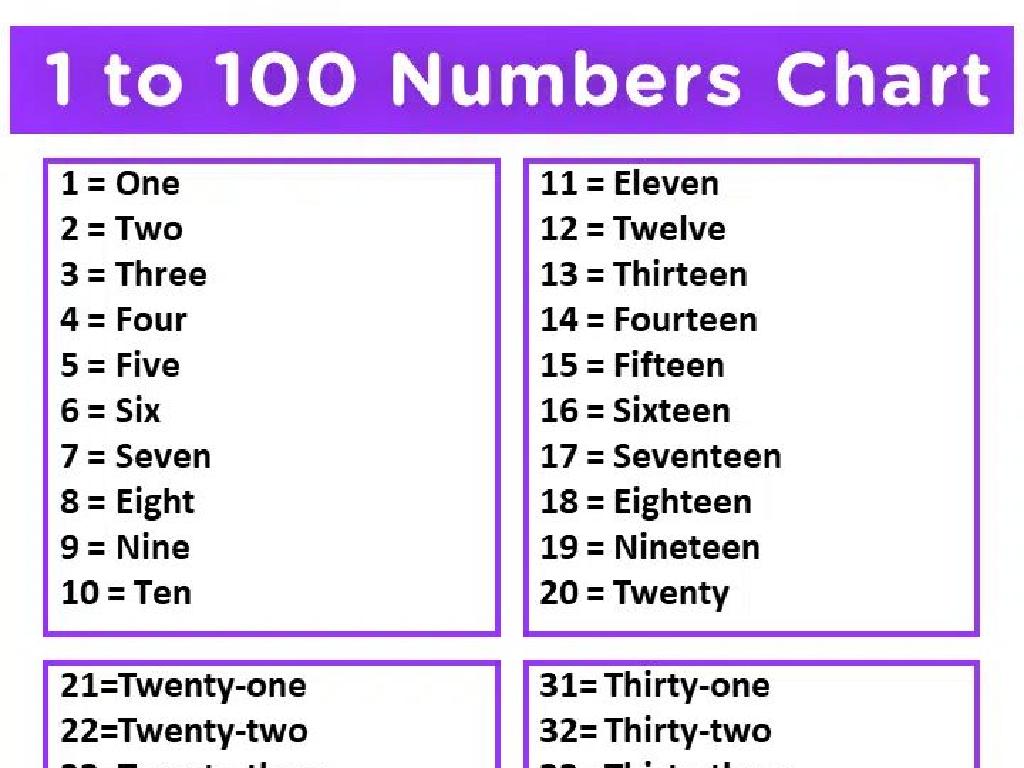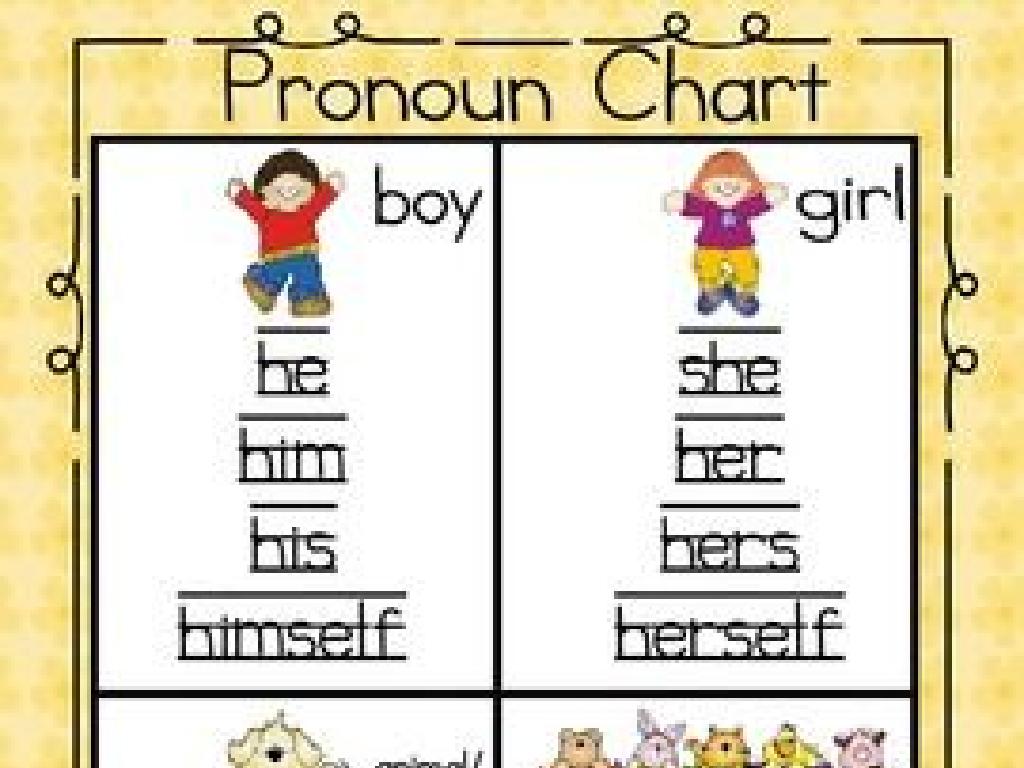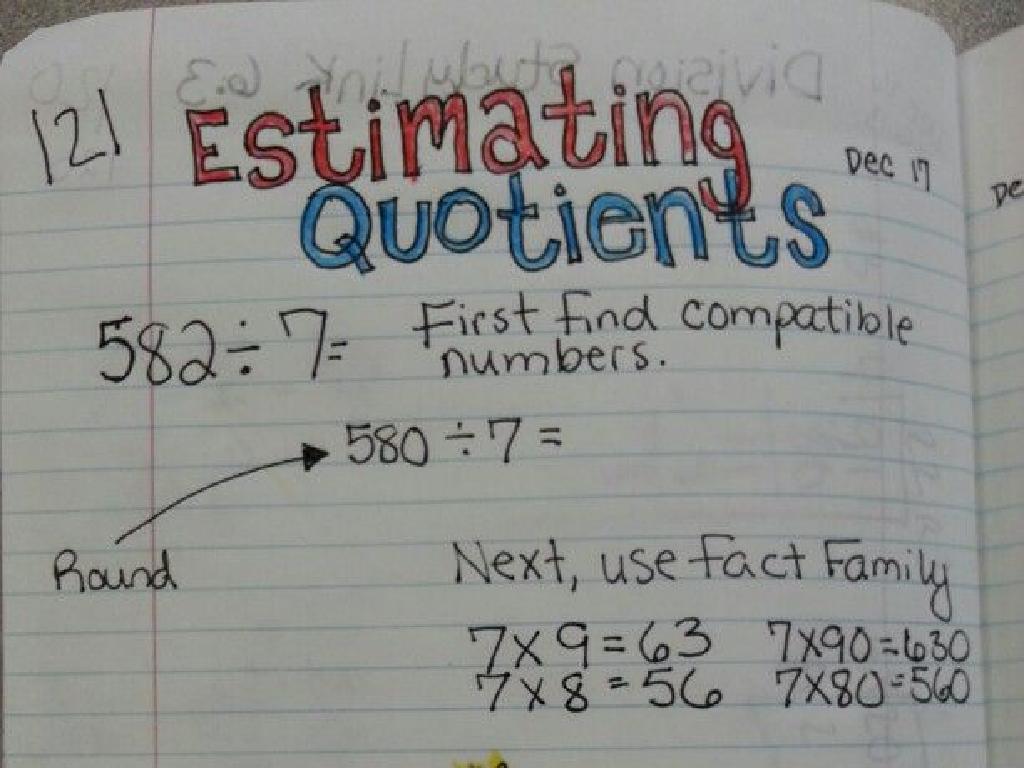Classify Logical Fallacies
Subject: Language arts
Grade: Seventh grade
Topic: Persuasive And Opinion Writing
Please LOG IN to download the presentation. Access is available to registered users only.
View More Content
Classifying Logical Fallacies in Persuasive Writing
– What is persuasive writing?
– Persuasive writing aims to convince readers to accept a viewpoint.
– Exploring logical fallacies
– Fallacies are common errors in reasoning that weaken arguments.
– The impact of fallacies on arguments
– Fallacies can mislead readers and undermine the writer’s credibility.
– Recognizing fallacies in writing
– Learn to identify fallacies to strengthen your persuasive skills.
|
This slide introduces students to the concept of logical fallacies within the context of persuasive writing. Begin by explaining persuasive writing as a style that aims to convince the audience of a particular point of view or argument. Emphasize the importance of strong reasoning in making a persuasive argument. Discuss what logical fallacies are and how they can detract from the strength of an argument, leading to misinformation or invalid conclusions. Highlight the significance of being able to identify and avoid logical fallacies in their own writing to maintain credibility and effectively persuade their audience. Provide examples of common fallacies and engage students in identifying them in sample texts.
Understanding Logical Fallacies
– Define a logical fallacy
– An error in reasoning that weakens arguments
– Fallacies in persuasive writing
– Used to mislead or persuade by deception
– Examples of common fallacies
– Ad hominem, slippery slope, and straw man fallacies
– Impact on argument strength
– Fallacies can undermine the credibility of arguments
|
This slide introduces the concept of logical fallacies to students, which are mistakes in reasoning that weaken arguments. It’s crucial for students to recognize these errors as they learn to analyze persuasive writing. By understanding fallacies, students can critically evaluate arguments and avoid being misled by flawed reasoning. Provide examples like ad hominem (attacking the person instead of the argument), slippery slope (assuming one step will lead to a chain of negative events), and straw man (misrepresenting an argument to easily refute it). Discuss how recognizing these fallacies is essential for developing strong, credible arguments and for critical thinking in everyday situations.
Classifying Logical Fallacies
– Ad Hominem Fallacy
– Attacks the person instead of the argument
– Straw Man Fallacy
– Distorts the opposing stance to make it easier to counter
– Bandwagon Fallacy
– Assumes a proposition is true because many people believe it
|
This slide introduces students to three common types of logical fallacies that can undermine the strength of an argument. The Ad Hominem fallacy focuses on discrediting the individual making the argument rather than addressing the argument itself. The Straw Man fallacy involves misrepresenting someone’s argument to make it easier to attack, rather than engaging with the actual position. The Bandwagon fallacy is the belief that an argument is valid because it is popularly held. Understanding these fallacies is crucial for students to critically evaluate arguments and to avoid these pitfalls in their own persuasive writing. Encourage students to find examples of these fallacies in media or debates to illustrate their understanding.
Identifying Logical Fallacies
– Spotting fallacies in writing
– Learn to identify incorrect arguments that may seem sound
– Analyzing example fallacies
– We’ll look at real examples to see common fallacies in action
– Critical thinking in arguments
– Think deeper about what’s being said and question the logic
– Understanding fallacy impact
– Grasp why recognizing fallacies strengthens your own arguments
|
This slide introduces students to the concept of logical fallacies, which are errors in reasoning that weaken arguments. Students will learn how to identify these fallacies in various forms of writing, enhancing their critical thinking skills. By analyzing examples as a class, students will become familiar with common fallacies and understand how they can be used to manipulate arguments. Encourage students to look beyond the surface of what is presented and to question the validity of the reasoning. Understanding logical fallacies is crucial for developing strong persuasive writing skills and for evaluating the strength of others’ arguments.
Logical Fallacies in Media
– Spot fallacies in ads
– Identify misleading techniques in commercials.
– Analyze political speeches
– Evaluate arguments in political speeches for fallacies.
– Discuss fallacies’ impact
– How do fallacies sway public opinion?
– Critical thinking activity
|
This slide aims to educate students on identifying logical fallacies in various media, emphasizing critical thinking. Students will learn to spot fallacies in advertisements, where emotional appeal or misleading information may be used to influence consumer behavior. They will also analyze political speeches, a realm where fallacies can obscure facts or manipulate public sentiment. Discussing the impact of fallacies on public opinion will help students understand the importance of discerning truth from deception in media. As a class activity, students can bring examples of ads or political speeches and work in groups to identify any logical fallacies present. This exercise will enhance their analytical skills and promote healthy skepticism towards persuasive content.
Your Turn: Spot the Fallacy!
– Group activity: Find fallacies in scenarios
– Each group presents their findings
– Class votes on the strongest arguments
– Discuss why some explanations are better
– Why are certain arguments more persuasive?
|
This class activity is designed to engage students in identifying logical fallacies through group work. Provide each group with different scenarios where they must pinpoint and discuss the logical fallacies present. After the group discussion, each group will present their findings to the class. Following the presentations, the class will vote on which group provided the best arguments and explanations. This will lead to a discussion on what makes an argument strong or weak and why some explanations are more convincing than others. As a teacher, prepare to guide the discussion, ensuring that each group understands the fallacies they’ve identified and can articulate why certain arguments are more persuasive. Possible activities: analyzing advertisements, political speeches, or opinion articles.
Wrapping Up: Logical Fallacies
– Recap of logical fallacies
– Why fallacies matter in persuasion
– Fallacies can weaken arguments, making it crucial to identify them.
– Homework: Analyze a news article
– Find a current news piece, spot a logical fallacy, and explain it.
– Be ready to discuss your findings
– We’ll share and learn from each other’s analysis in the next class.
|
As we conclude today’s lesson, it’s important to reinforce the students’ understanding of logical fallacies and their impact on the strength of persuasive arguments. Emphasize that being able to recognize fallacies is a critical skill for evaluating the validity of arguments in writing and everyday discourse. For homework, students should find a logical fallacy in a current news article, write a brief explanation of the fallacy, and be prepared to discuss how it affects the argument’s credibility. This exercise will help them apply what they’ve learned in a real-world context and prepare them for a thoughtful discussion in our next class. Provide examples of common fallacies to aid their analysis, such as ad hominem attacks, slippery slope arguments, or appeals to emotion.






